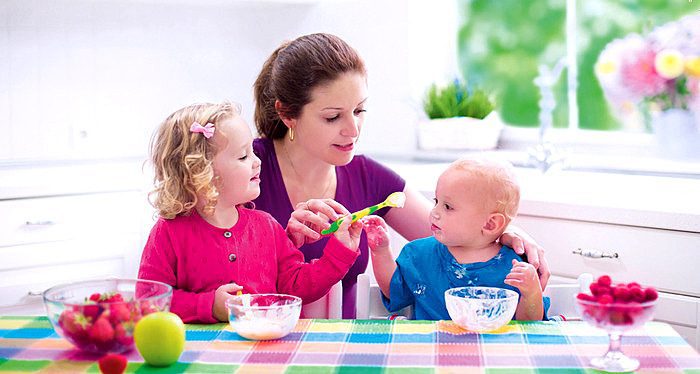Opinions on this subject differ slightly, but pediatricians agree that the introduction of complementary food in babies should take place between four and six months. It is not recommended to start earlier to avoid the risk of allergy, which is particularly high in very young babies.
So from four months, you can start adding different foods to your child’s meals. You should never forget one golden rule: Give him time to become familiar with the new tastes and textures that were previously unknown to the baby. Do not stress your child and remember that breast milk or formula will continue to be the basis of his diet. In this introductory phase, vegetable purees or cooked fruit compotes that need to be finely mixed are suitable. The result must be smooth and not contain any pieces. For vegetables, start with carrots, green beans, spinach, zucchini, squash or beets. It is better to wait a little longer with cabbage and beets, as these vegetables are more difficult to digest. When it comes to fruit, the classics are a good place to start: apples, pears, bananas and apricots. For the time being, avoid exotic fruits and red fruits (cherries, raspberries, strawberries, etc.), as these can trigger allergies. Gluten-free cereal is also a suitable food from four months of age. It is usually the first to be added to the daily diet, in the form of flour mixed into the bottles. Gluten is an allergen, so do not give children under six months of age bread edges or products with wheat flour, such as dessert creams. A bottle of milk enriched with a little cereal will fill your baby better in the evening and allow him to sleep through the night without hunger.
Protein and small pieces
As long as your child consumes milk in large quantities, his protein needs are covered. Therefore, for the time being, it is not important to add meat, fish or eggs to his meals. From the age of nine months, you can start to introduce him to these tastes by feeding him some white meat (chicken or veal), fish or cooked egg yolk. But be careful: introduce these foods gradually and in very small quantities. At nine months, two teaspoons, or about 15 grams per day, is enough. From about one year, you can increase to 20 grams. In children, the chewing reflex develops between the sixth and eighth month of life, even if they don’t have teeth yet. However, this does not mean that chunks can be fed from this time onwards, as there is a risk of choking! Change the consistency of purees from a smooth mixture to strained or thoroughly mashed with a fork before taking this step. Between eight and twelve months, your baby can easily manage small pieces. But even then, you still need to be careful and make sure that the pieces are not too big. You can also give him a piece of bread or thin slices of fruit, which he will chew on for a long time. From about nine months, you can also introduce lean, low-salt cheese and side dishes such as small noodles and rice crackers into his diet.











0 Comments